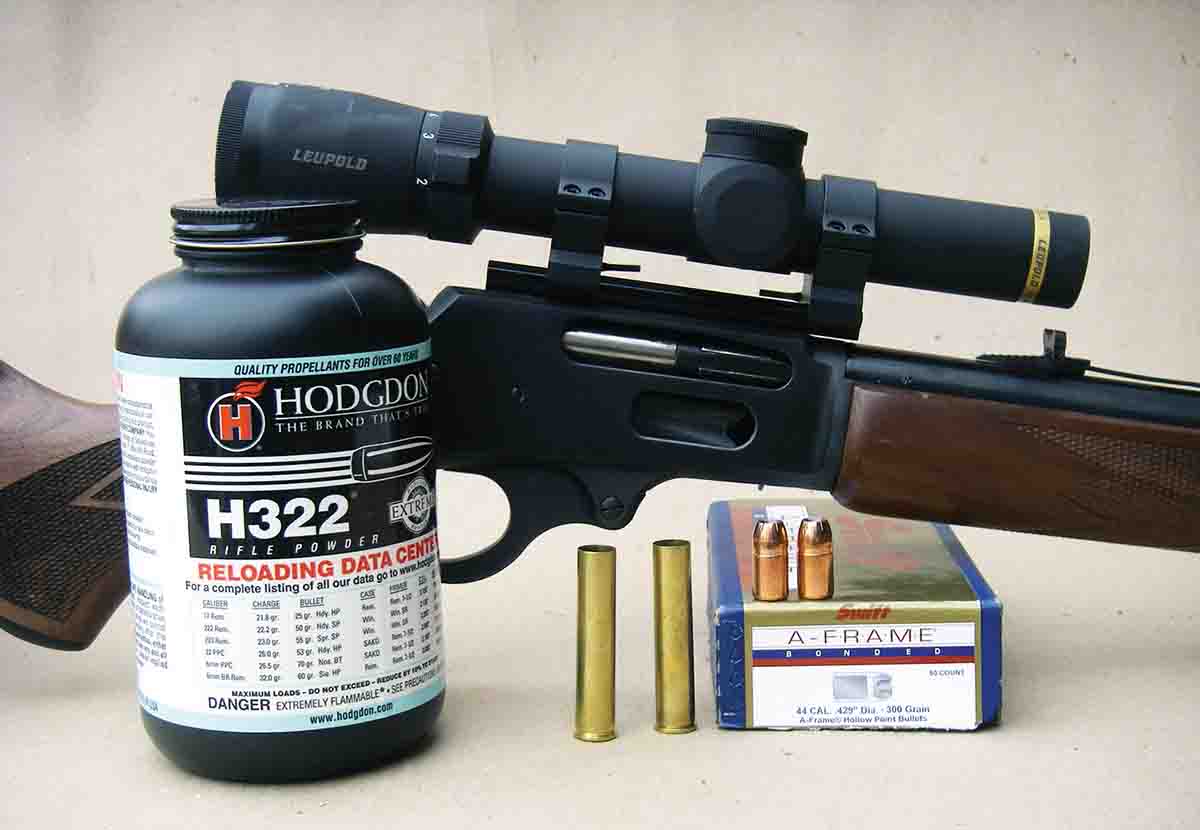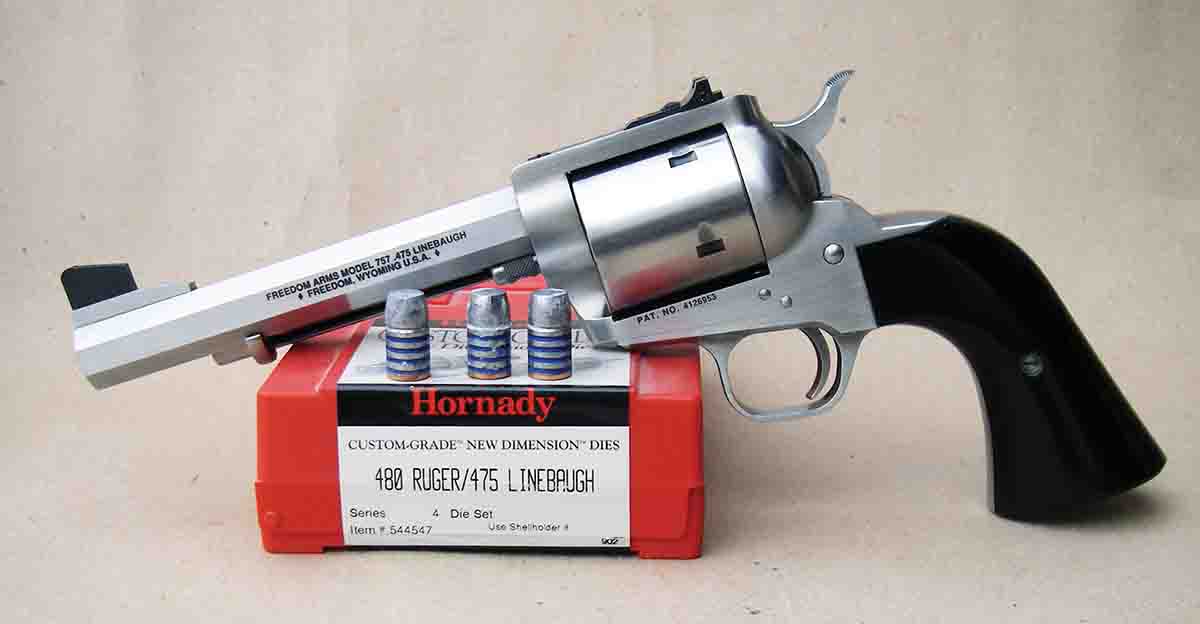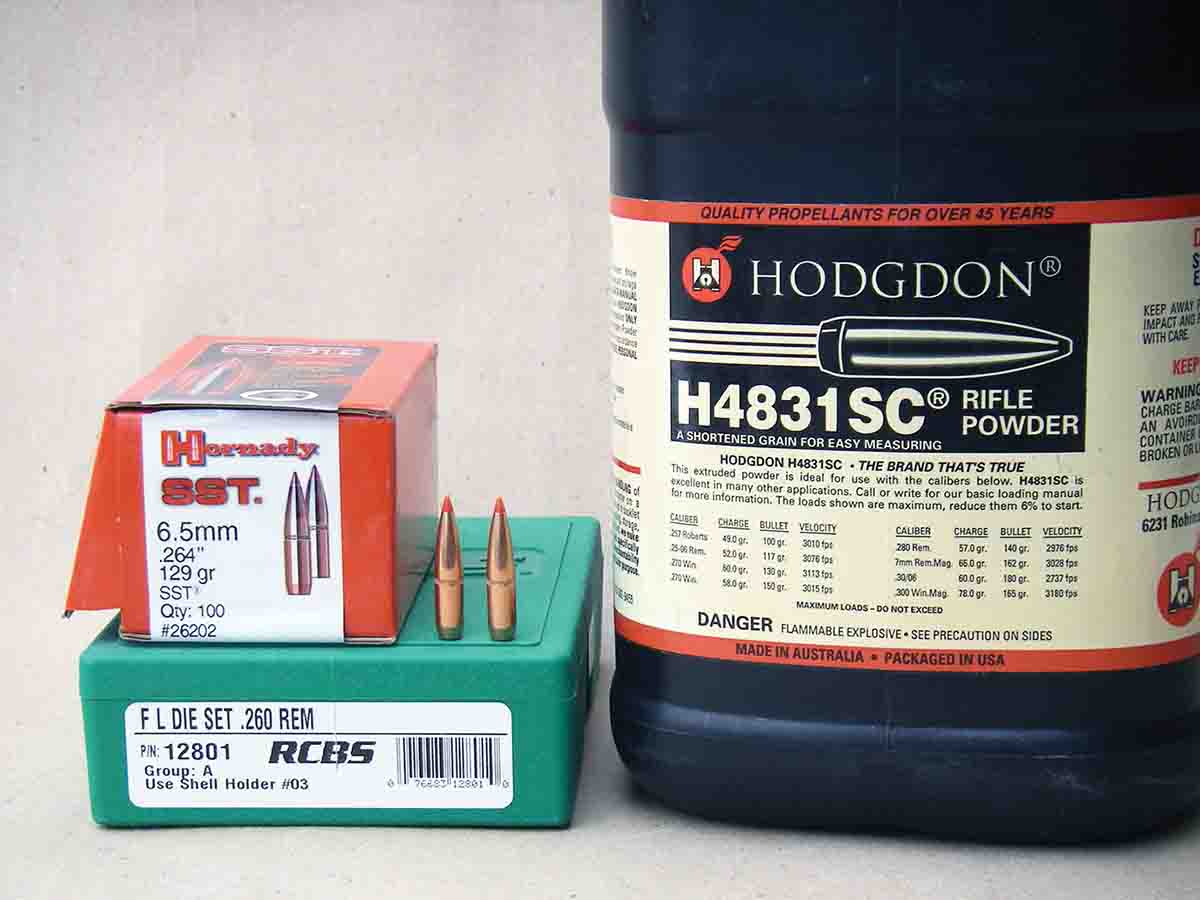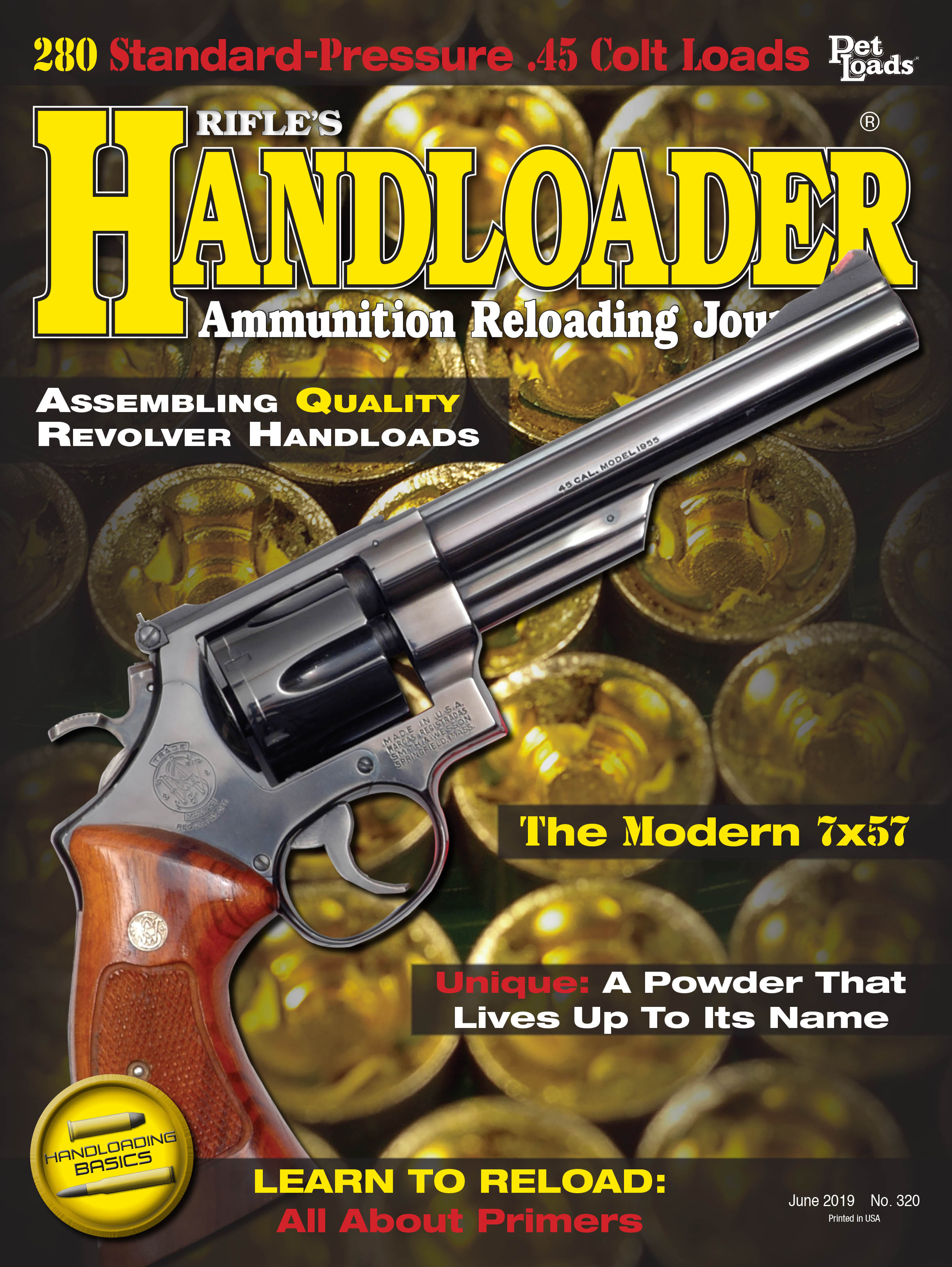Bullets & Brass
Swift Bullet .444 Marlin Data
column By: Brian Pearce | June, 19

Can you provide data for the 300-grain A-Frame using Hodgdon H322 powder (preferred due to its temperature stability) or H335? You listed data for the 300-grain Hornady XTP bullet with these powders, but I am not comfortable assuming that I can use that data with the Swift bullet. The Vihta Vuori and Accurate powders that you listed with the 300-grain Swift bullet are difficult to obtain in this corner of Alaska.
Thank you for any assistance you can provide. I very much enjoy your shooting projects and writing. Your work has been a great benefit to me. – K.F., Sitka AK
A: The 300-grain Hornady XTP and 300-grain Swift A-Frame bullets are distinctly different, as the latter measures .909 inch in length and has a bearing surface that measures around .675 inch. The former bullet measures .859 inch in length and has a bearing surface of around .640 inch. When developing data for the “Pet Loads” article that you reference, the Hornady bullet was seated to an overall loaded length of 2.540 inches, and the Swift bullet was seated to 2.550 inches. Due to its greater length, the Swift bullet seats slightly deeper, which slightly reduces powder capacity.
Nonetheless, you can substitute powder charges that were developed with the Hornady 300-grain XTP bullet with the 300-grain Swift A-Frame bullet, which changed the pressure very little in my tests performed specifically to answer your question. However, when using maximum charges with H-322 powder, they will be compressed, which is good. This serves to offer support to the base of the bullets and prevents them from becoming deep seated in cartridges that are in the magazine tube and subjected to recoil.
To reach the maximum 52.0- grain charge of H-322 I listed, you may need to trickle powder charges, depending on the manufacturer’s case capacity. This serves to settle the charge and results in greater capacity to seat the bullet to its crimp groove. I believe you will be satisfied with this load, as it is mostly temperature insensitive and produces minimum muzzle report and flash when compared with most other powders. Accuracy is top notch.
I think you will be pleased with the terminal performance of the .444 Marlin on Alaskan game. Thank you for your kind remarks and good luck hunting.
.32-20 Winchester
Q: I recently acquired an early Smith & Wesson Hand Ejector with a 6-inch barrel chambered in .32-20 Winchester. It is in pristine condition and has a perfect bore. I purchased one box of Remington and one box of Winchester ammunition just for starters, with each containing 100-grain lead bullets. Across my chronograph they each clocked a little under 800 fps, which was a bit disappointing. I had a gun virtually identical to this one in my teenage years, which was more than 60 years ago. It sure seems that factory loads in those days were faster than current stuff, but I didn’t have a chronograph then to know.
At any rate I would like to develop a handload that will push various 100- to 115-grain cast bullets at around 900 fps. Do you see a problem? Will such loads be too hot for this Smith & Wesson? I have 500 of the 115-grain RNFP from Oregon Trail bullets, as well as 115-grain bullets from Lyman mould #311008 as cast by Montana Bullet Works. Years ago I used IMR SR4756, but that powder is no longer available. Can you suggest a new powder, along with data to reach my targeted 900 fps and keep pressures within reason? – J. Smith, Tulsa OK
A: You are correct in that .32-20 ammunition was definitely loaded to higher pressures and velocities 60-plus years ago, but today pressures have been reduced due to the many guns built with inferior steels during the black-powder era.
While I generally avoid using high-velocity loads in my Smith & Wesson .32-20 revolvers, you can easily push 115-grain bullets to the 900-fps velocity level you desire. I suggest using either 4.5 grains of Hodgdon Longshot or 5.6 grains of Accurate No. 5 powder with either of the 115-grain cast bullets you mentioned. While the .32-20 is generally loaded with small rifle primers, these loads can be used in conjunction with small pistol primers such as the Federal 100 or CCI 500.
.480 Ruger Cast Bullets

In the meantime I am sticking with the 325-grain Hornady XTP bullet and have been using 17.5 grains of Alliant 2400 powder. I don’t know how fast that load is going, but it is too light for my purposes. Can you suggest a powder and charge weight that will duplicate factory load performance? – T.S., Riverton WY
A: It is hard to accurately evaluate handloading difficulties without having all components, dies and even the firearm in hand. My best guess is that your “gun show” special cast bullets are the culprit. Even though they are identified as being .476 inch, it sounds like they might have been sized to a larger diameter. Freedom Arms revolvers are generally chambered to minimum industry specifications. If your bullets are oversized, the ogive diameter of the WFN design just forward of the crimp groove is usually (but not always) full caliber, and if it measures .477 inch or larger, it will prevent loaded cartridges from chambering. You might check this by trying to push a bullet through the chamber throats. If it will not go through, there is your problem. If necessary, they can be run through a sizing die to bring them down to the correct diameter, which is generally .476 inch for cast bullets (.475 inch for jacketed bullets). An oversized bullet can also cause the case to increase in diameter enough to prevent chambering. Another possibility includes a too-heavy roll crimp that causes a slight case bulge just below the crimp. Using a precision blade caliper will help identify if there is a bulge just below the crimp.
Your load containing the 325- grain Hornady XTP bullet pushed with 17.5 grains of Alliant 2400 is producing around 900 fps. I suggest trying 25.0 grains of Ramshot Enforcer or 27.5 grains of Hodgdon H-110 powder, which will reach over 1,300 fps in most production revolvers and essentially duplicates factory loads. Be certain to use a large pistol magnum primer such as the Federal 155 or CCI 350.
.260 Remington Loads

I have been using various 140- grain bullets, but want to try some of the new bullets such as the Hornady 129-grain InterBond and 129- grain SST. I am looking to reach top velocities to help flatten trajectory at the reasonable distances that I will take deer. I have most suitable powders on hand, but will purchase whatever you recommend. My rifle is fitted with a 22-inch barrel. Is it possible to reach 2,700 or 2,800 fps with these bullets? What powder and charge weight would you suggest? Also, can you suggest a good source for cases? – T.M., MO
A: Using either of the 129-grain Hornady bullets, start with 46.0 grains of Hodgdon H-4831sc powder (for around 2,675 fps) and work up to a maximum charge of 50.0 grains for more or less 2,900 fps. In my tests, this powder and bullet combination also gave top-notch accuracy.
Try Starline Brass (800-280-6660) or Nosler for fully prepared ready-to-load cases.


